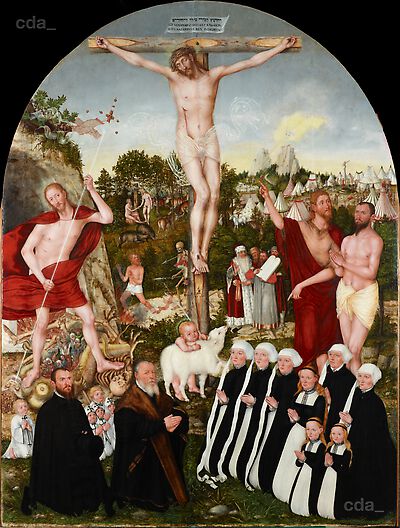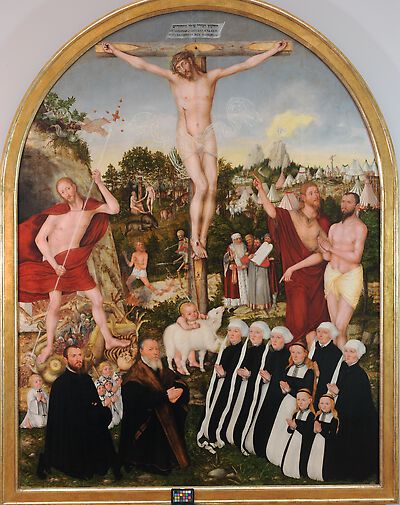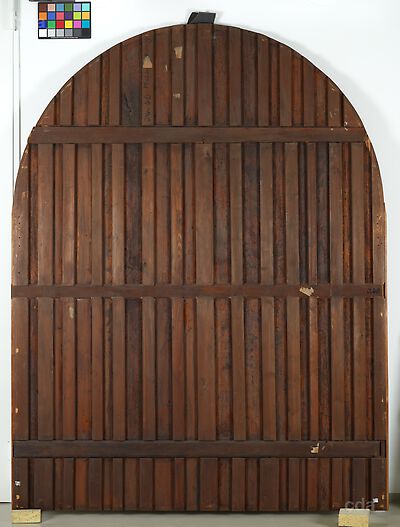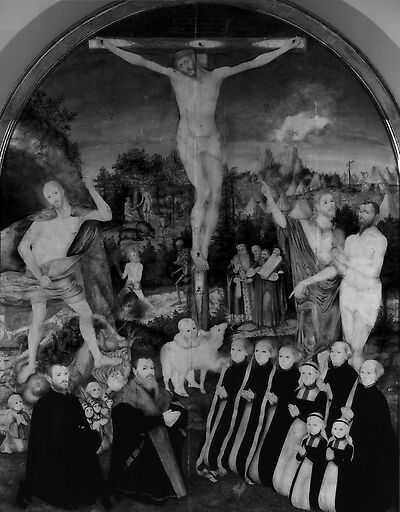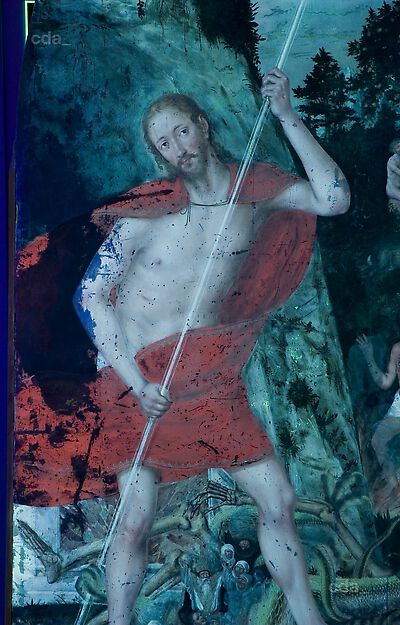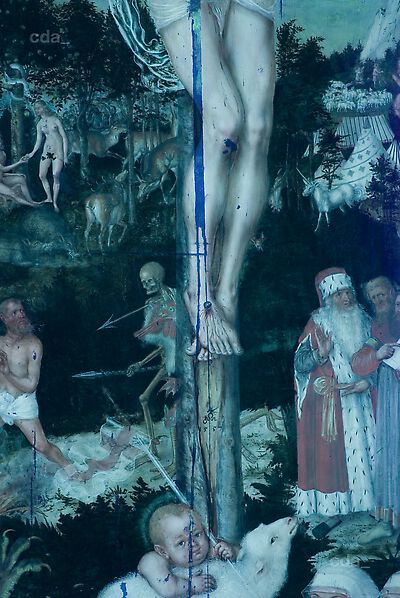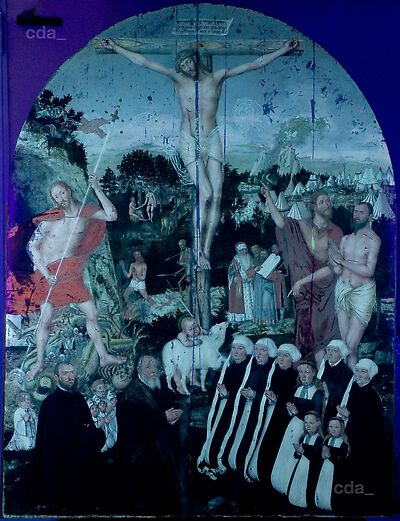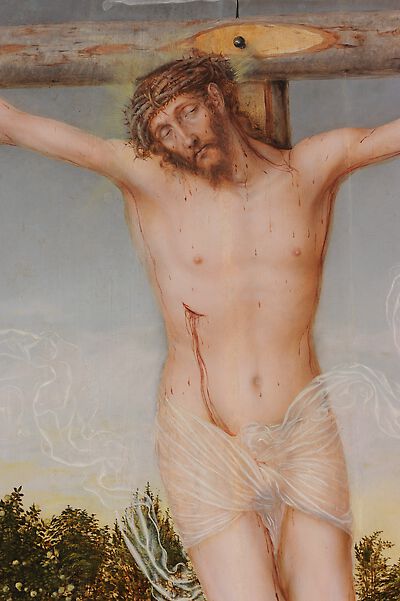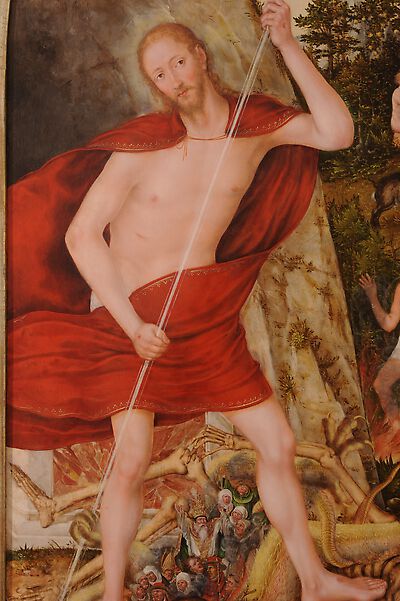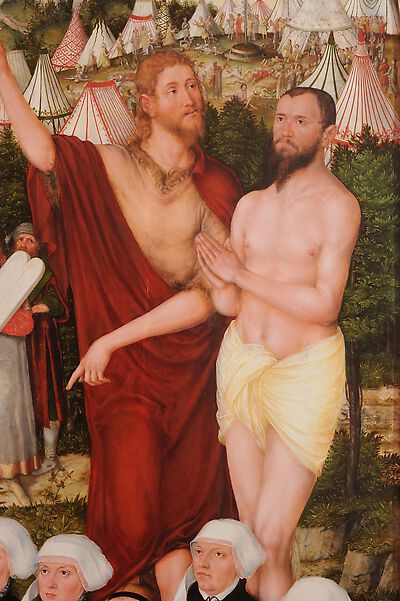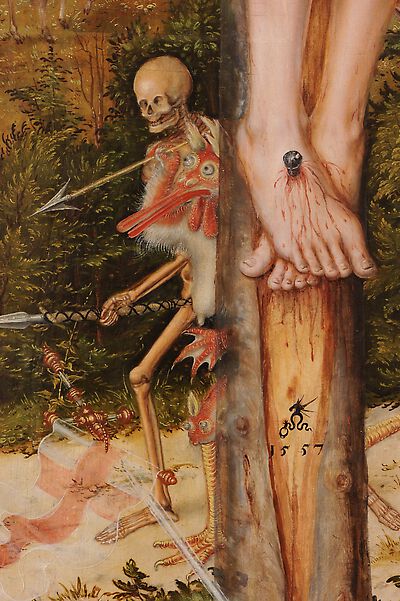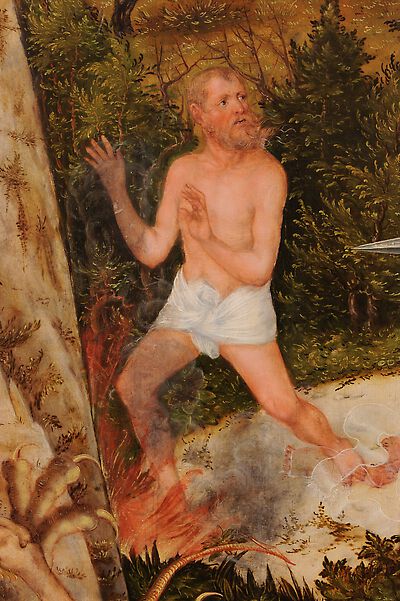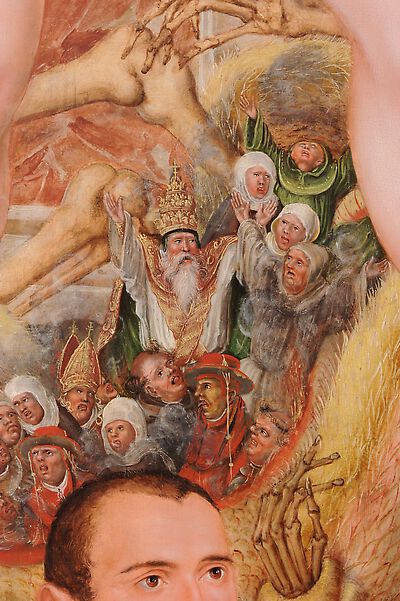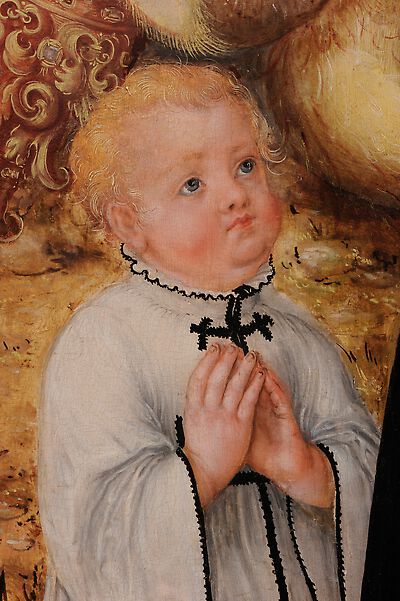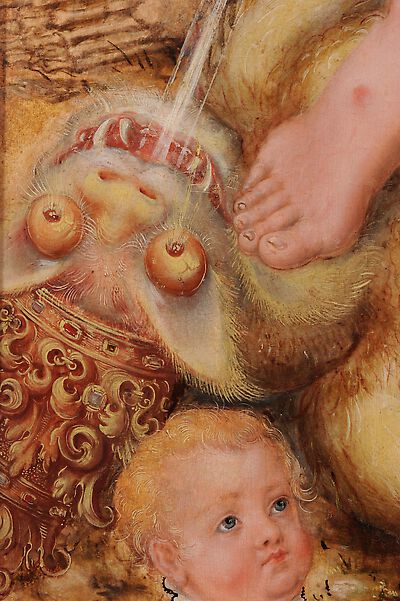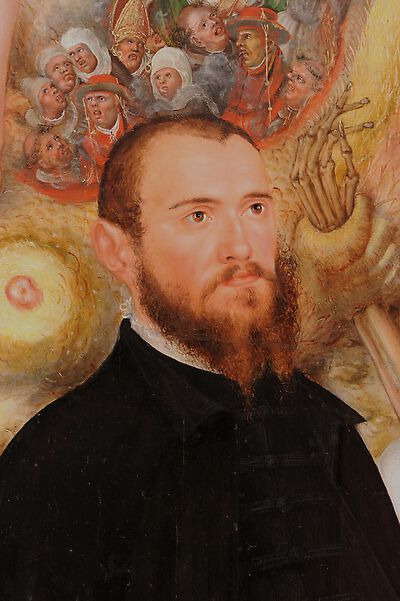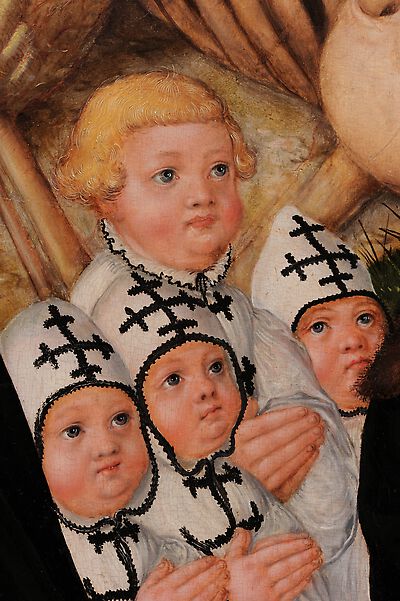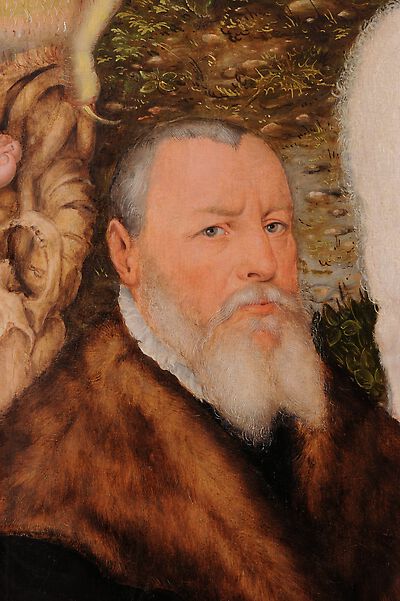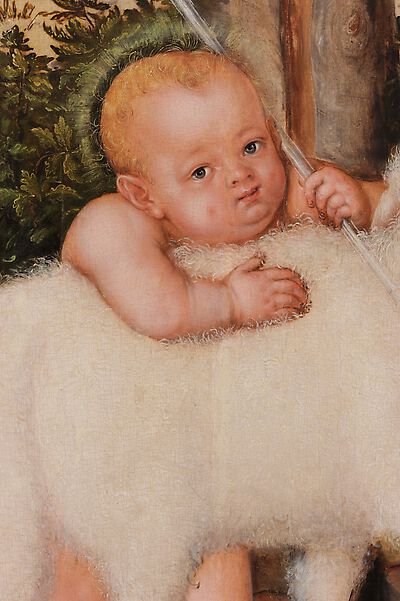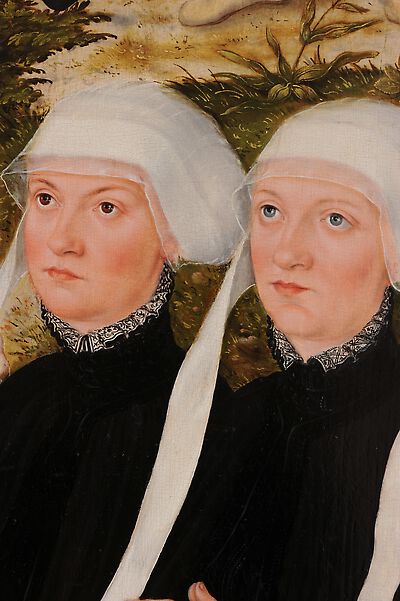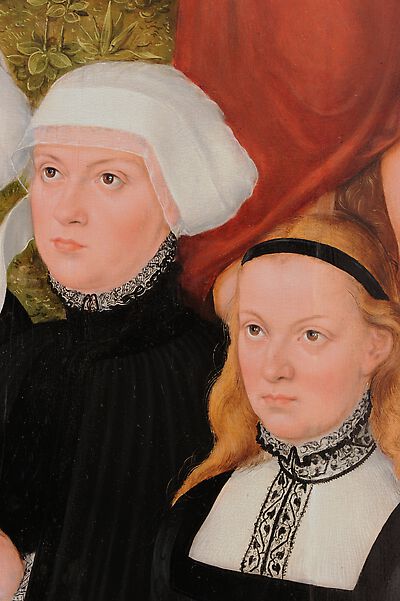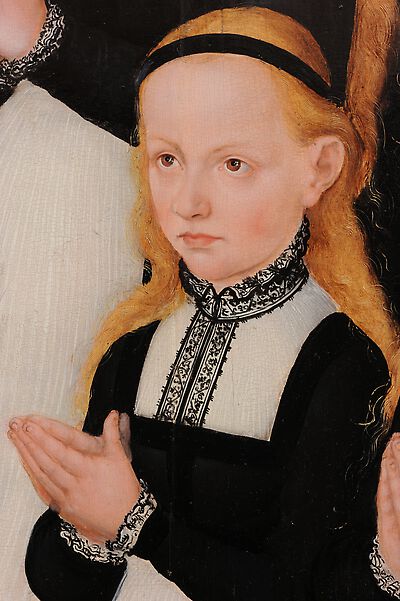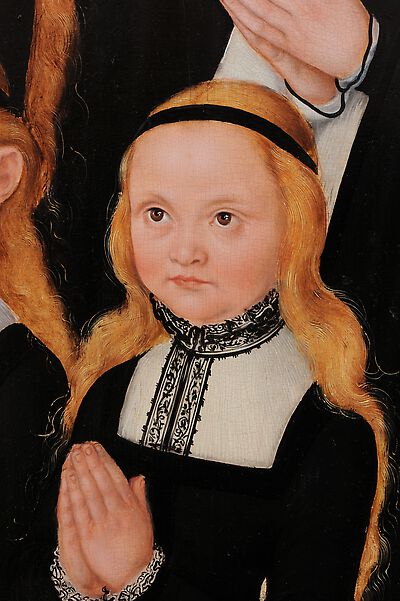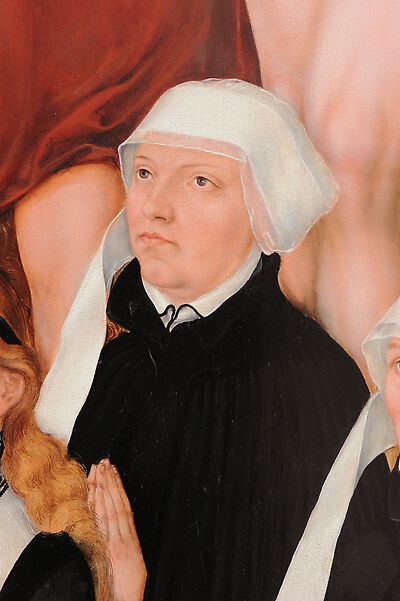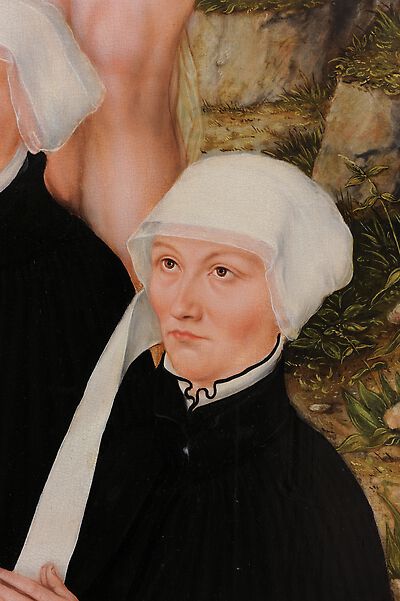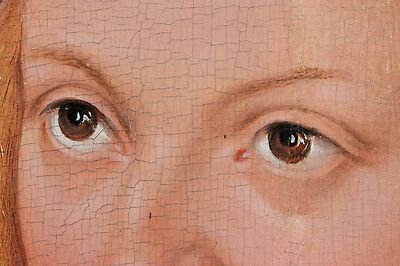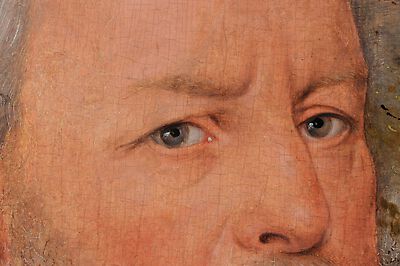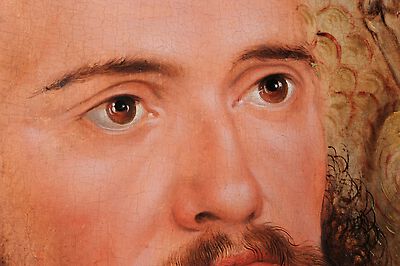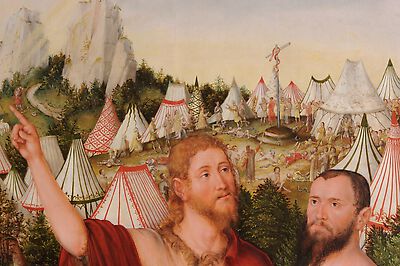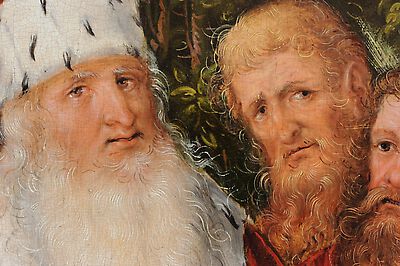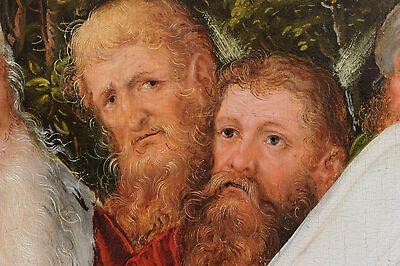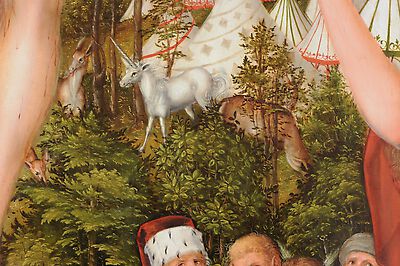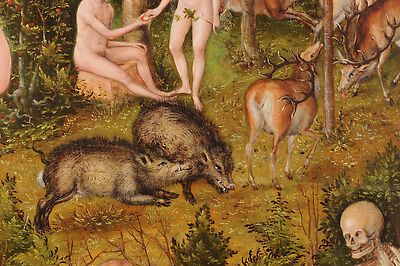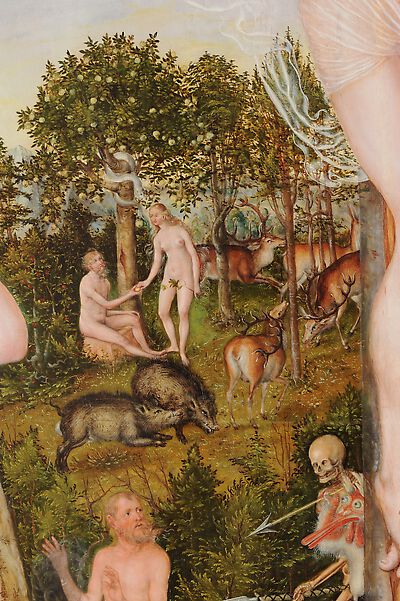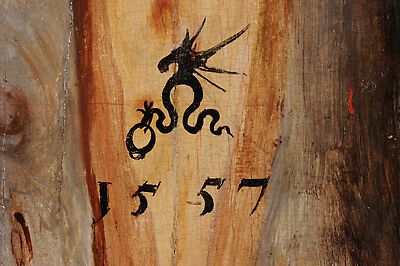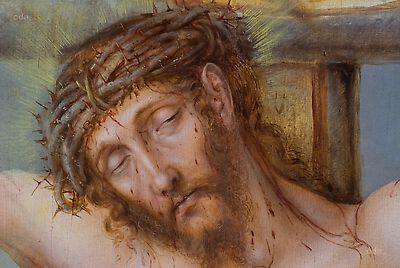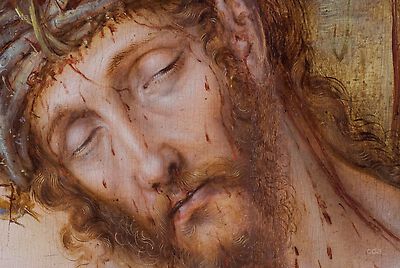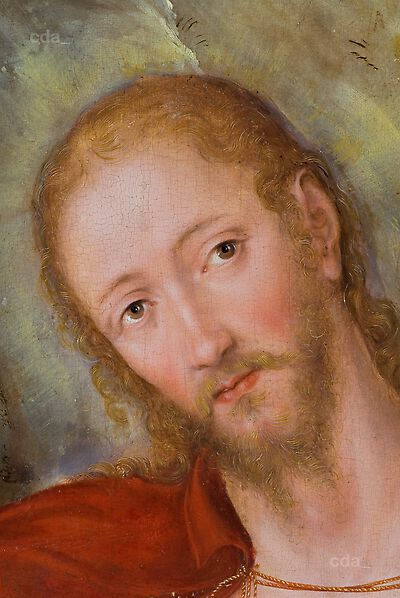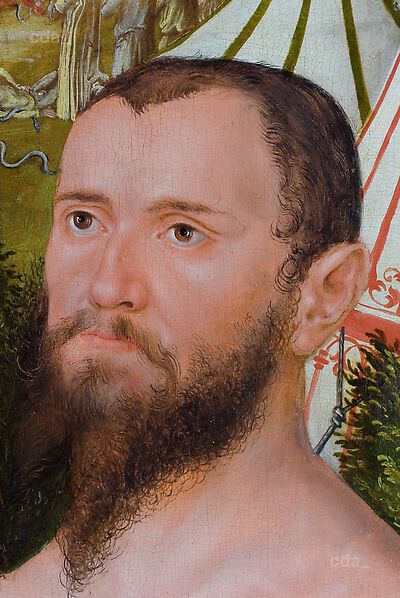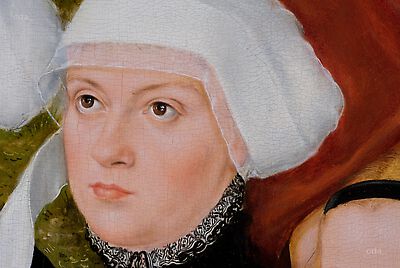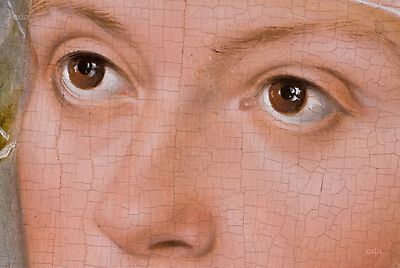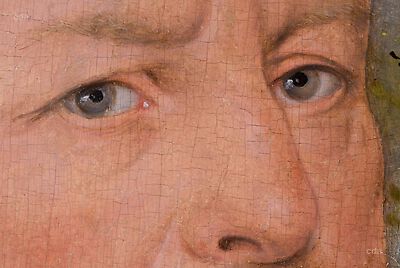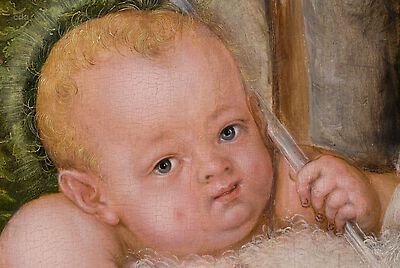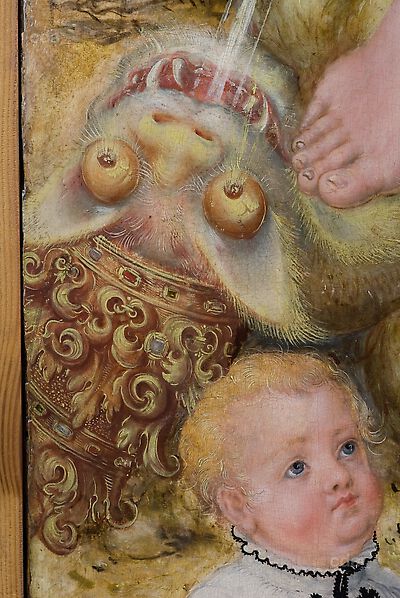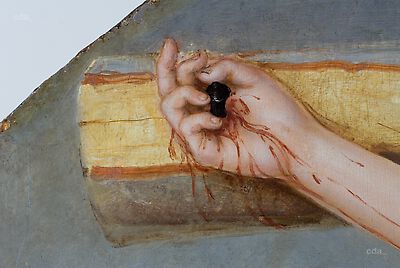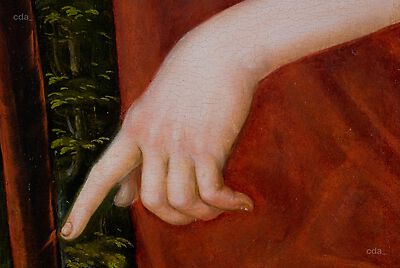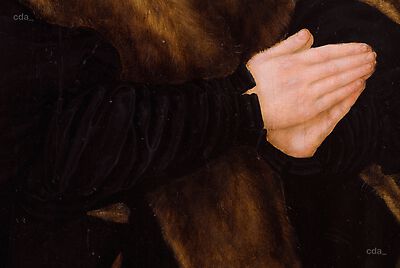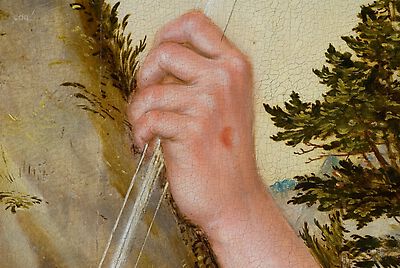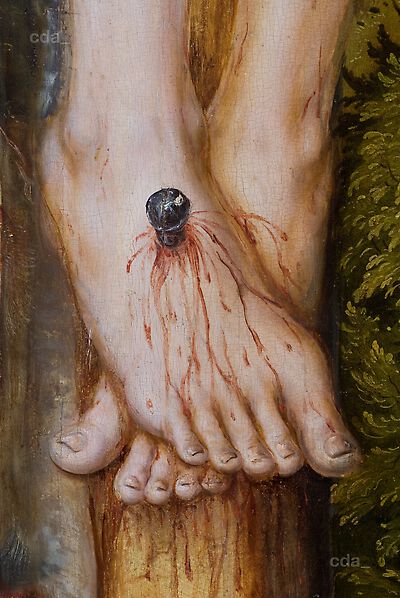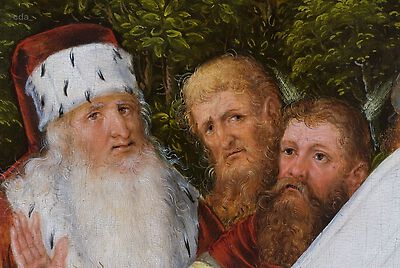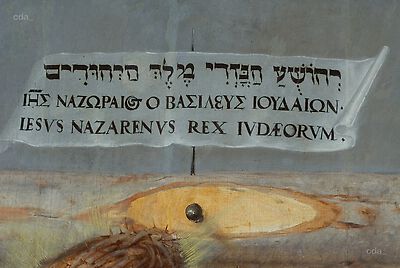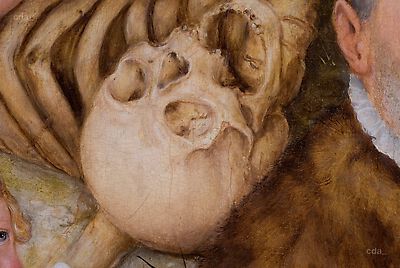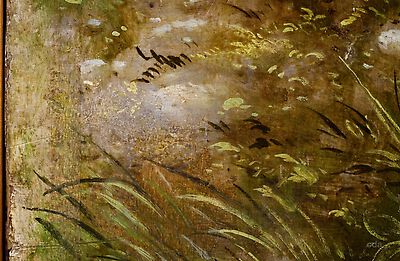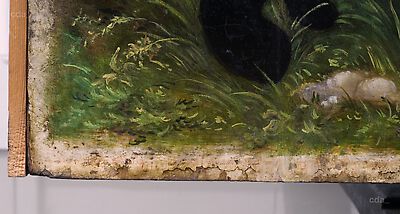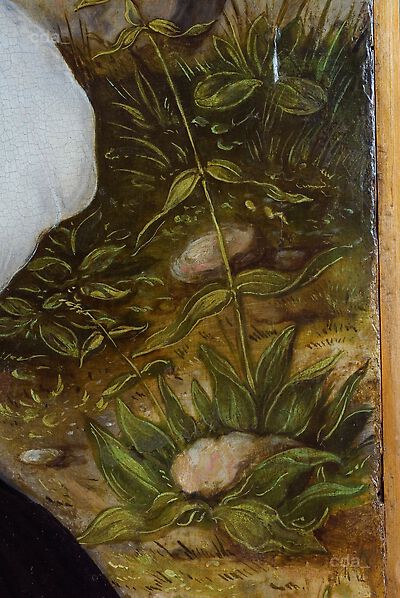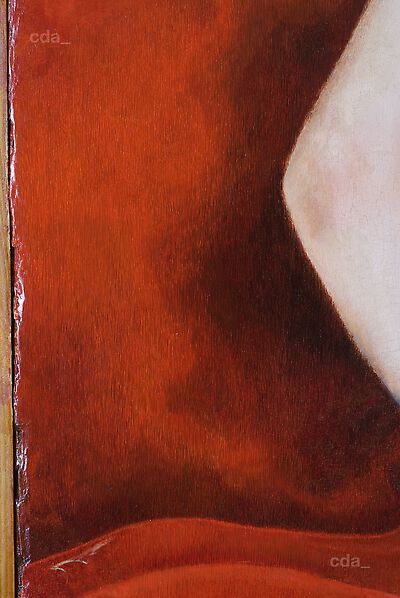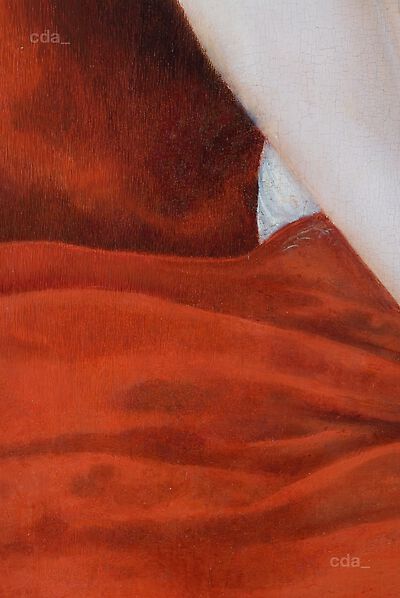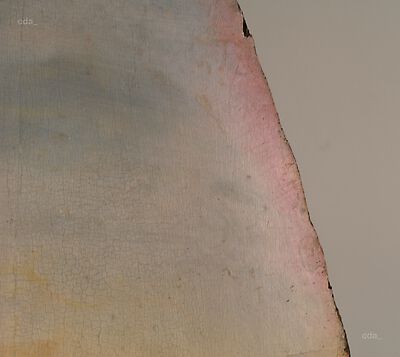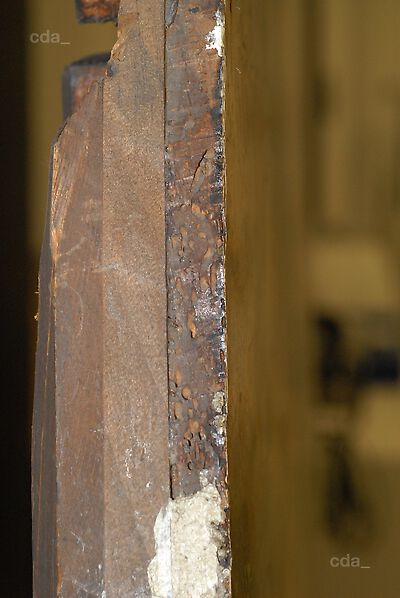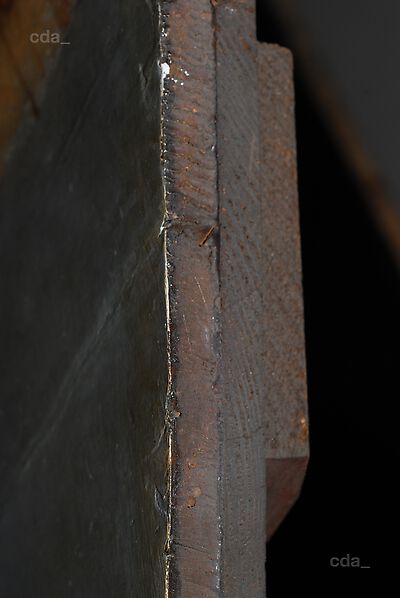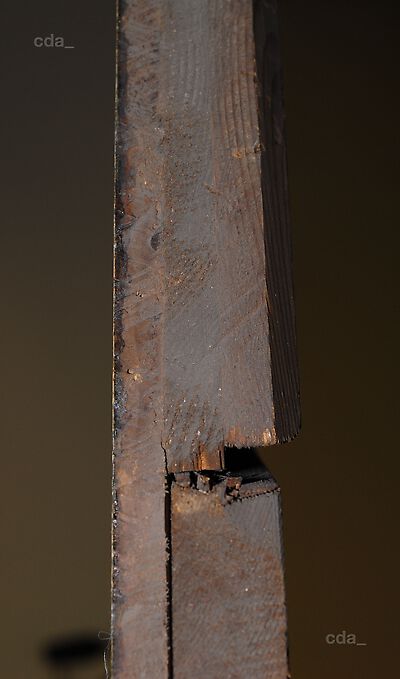Support
- limewood (Tilia sp.). Identification of wood species by: Manfred Becker (conservator), Berlin, presumably in the early 80s Identification of wood species by Dr. Peter Klein, Hamburg, report from 26.10.2013
- 14 vertically aligned boards with butt joints, two ridged cross-members, the groove is original
- the fifth board from the top exhibits a large knot (irregular square wooden insert visible on the front), otherwise no knots are visible
- board widths: I: 15.0, top/14.8, bottom, II: 14.8, bottom/13.5, top, III: 15.2, top/12.3, bottom, IV: 14.5 bottom/10.0 top, V: 18.5, top/15.7, bottom, VI: 16.2, top/13.5 bottom, VII: 16.0 top/12.5 bottom, VIII: 22.1 bottom/15.8 top, IX: 18.3 bottom/15.0 top, X: 11.3 top/11.0 bottom, XI: 13.0 top/10.0 bottom, XII: 14.0 bottom/13.5 top, XIII: 11.0 top/9.8 bottom, XIV: 15.5 bottom/15.0 top
- remains of marks from a block plane visible on the revers
- the joins do not appear to have been reinforced
- a rebate was created on the reverse after the panel was painted and after the dimensions were altered: width: 25-30 mm, depth: 10mm
- assuming the ridged battens were positioned at the same distance from the edges of the panel the original format would have been a rectangular panel of c. 290 x 200 cm, which was then rounded at the top after the painting process and trimmed by c. 30 cm at the bottom. The left and right edges were also planed after the painting was completed.
Ground and Imprimatura
- white ground, probably chalk/glue (not tested)
- thick ground, 0.5 to 1.0 mm
- the ground was probably applied to the edge of the rectangular panel
- no imprimatura
Underdrawing
- underdrawing with a brush; essentially contours with some modeling in the figures
- faintly visible to the naked eye under the flesh paint
- the format of the image was indicated with red chalk lines, see detail photograph of the bottom left corner
- only minor alterations in the painted version, e. g. the position of John the Baptist's head and the position og Christ's eyes
- there is no indication that the design was transferred
Paint Layers and Gilding
1. Initial paint application after the underdrawing:
grey to greyiah-brown washes, the flesh paint and the white areas were held in reserve at this stage e.g. the lamb, the white garments and parts thereof, flesh paint
2. Sky:
a wet-in-wet application of lead white, lead-tin-yellow and bluish-grey (probably smalt) directly over the white ground, increasingly bluish-grey towards the top. A red content is present in the remnants of the white admixture (sunset atmosphere intended)
3. Clothes:
dark garment were underpainted with an opaque layer (dark grey), red garments were initially laid in with an opaque red layer. The white parts of the garments are highlighted with lead white applied to the ground, the shadows were blended wet-in-wet with admixtures of grey paint.
4. Landscape:
a grey to greyish-brown wash, holding the lighter zones like paths, cliffs and hill in reserve and using the exposed ground. The vegetation was added in part employing a flat application of light green paint,, opaque to semi-transparent, but also in part laid in employing a luminous green glaze. The outines of leaves were applied over this, grass and branches were added in light yellow, yellowish-green or brown admixtures (often in impasto). finally some greeen glazes were applied.
5. Flesh paint:
in the areas of shadow initiall grey washes, very finely dabbed and blended. The ground frequently remained exposed for the highlights (with a fluid transition to the areas of shadow) and fluid transitions to the greyish-brown admixture of the hair (hair flat application of semi-opaque brown tones applied wet-in-wet). After the drying process the flesh tones were added. Applied as an opaque layer in the highlights and softly scumbled over the grey underpaint. A vermilion/white admixture was blended wet-in-wet for the highlights. The deeper shadows in the flash paint and the hair were emphasized with thin blackish-brown glazes. delicate highlights, contours and the tips of the hair were added last.
- glazed to opaque application, impasto highlights (particularly in the grassy landscape, the garments, and the hair)
- flat and pointed brushes of varying widths, paint consistency thin to impasto
- at the bottom edge c. 2 cm of the ground is exposed and the roughly indicated boarder of the painted surface. On the left side at the bottom the ground and edge of the painted surface are visible along c. 30 cm of the edge. Above this the painted surface extends to the edge of the panel.
- the sky has greyed (probably smalt), the red tones have faded in the sky and in part in the garments (St John the Baptist's undergarment)
Framing
- not original, probably from 1848
- dimensions: 280 x 219 x 6 cm
- coniferous wood
- the corner joins overlap at the bottom, at the top it is a semi-circle. Plate frame, half-rounded batten attached along the outer edges; flat plate gilded, reworked (bronze powder), inner flute and half-rounded battens gilded with silver leaf and finished with a gold glaze.
[Museum der bildenden Künste, 11.06.2014]
